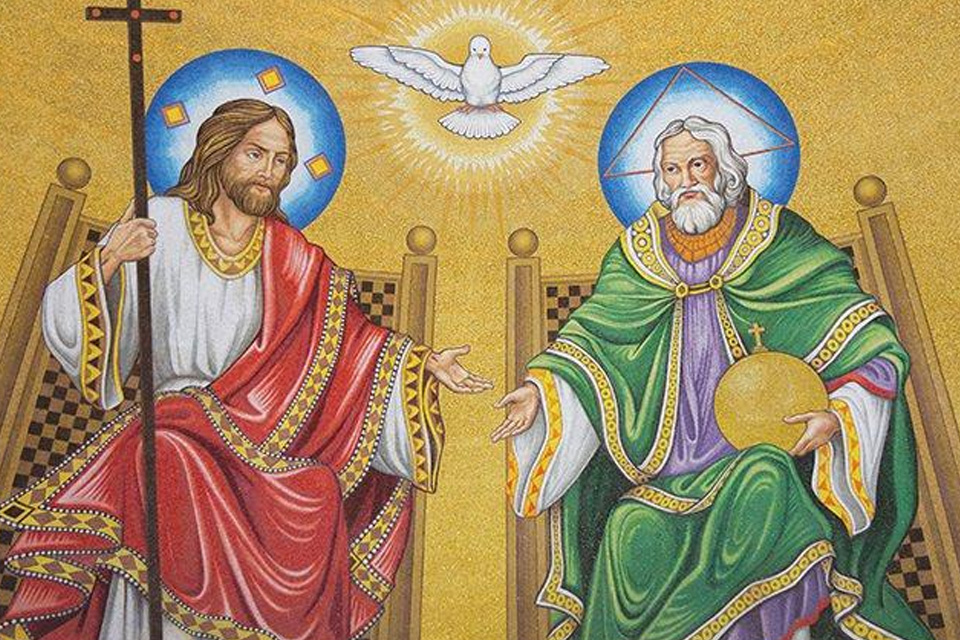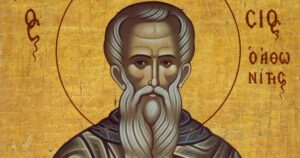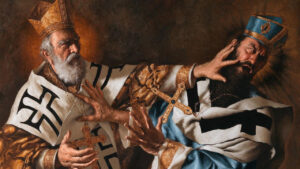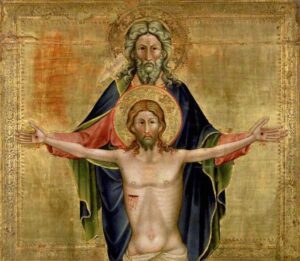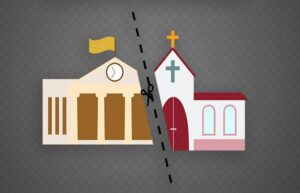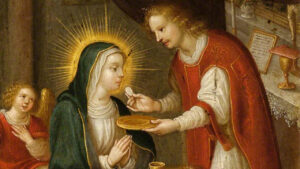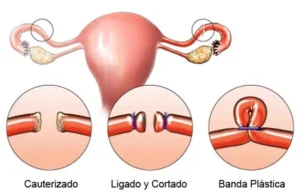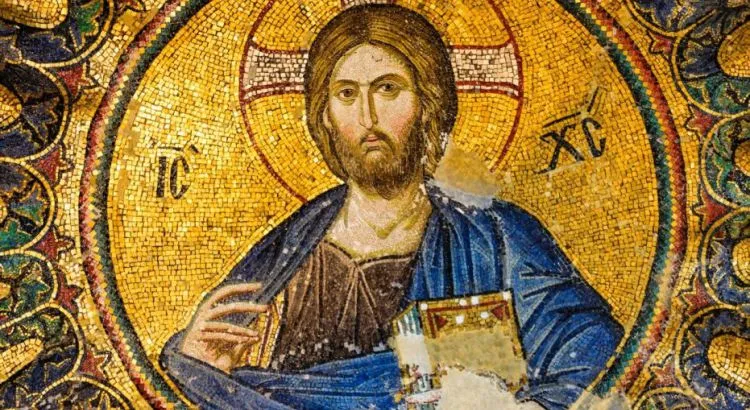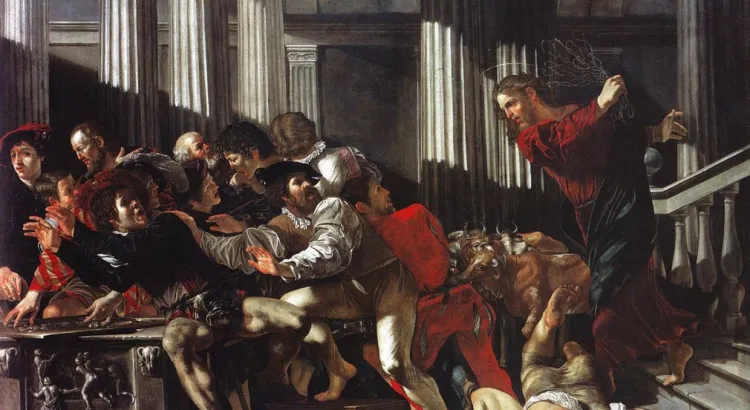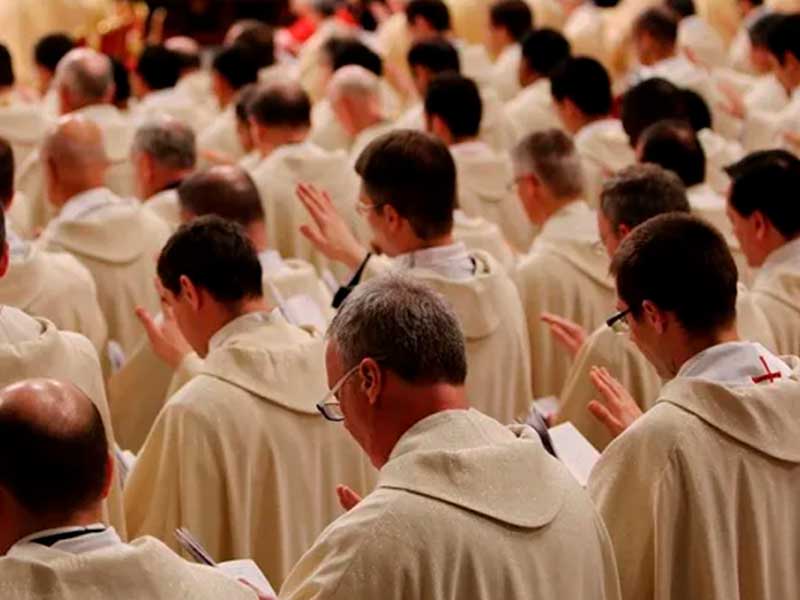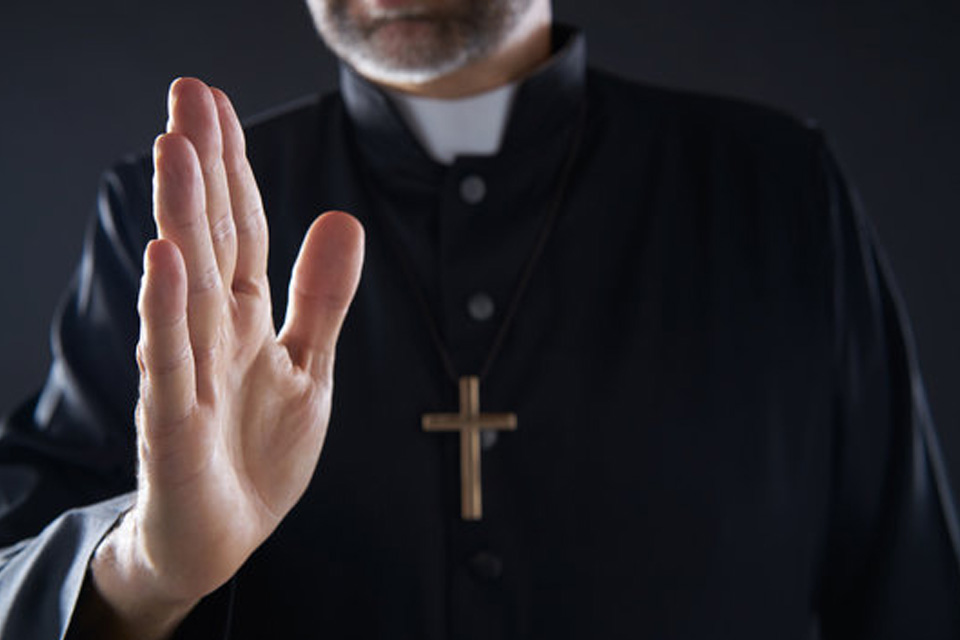Question:
A friend asked me, “How do you explain the statement that ‘(Jesus) is seated corporally at the right hand of the Father?’ In this case, who is seated to the left?
Answer:
The text to which you make reference is repeatedly taught in Sacred Scripture: “The Lord Jesus, after he had spoken to them, was taken up into heaven, and sat down at the right hand of God” (Mk 16:19); “He sat down at the right hand of the Majesty on high” (Hb 1:3; also in Col 3:1).
The inquiry you make was already presented to St. Augustine in the 4th century, to which he responded that this was a human way of interpreting the expression. To be seated at the right hand of the Father signifies being in beatitude, and “in eternal beatitude, all are to the right, because there is no misery.”
Therefore, “to sit to the right hand,” in figurative language does not have a bodily or local sense, but it is a phrase that indicates the honor and power given to a person. In the case of the expression “Christ is seated at the right hand of the Father,” it means: First, Peace, eternity and incorruptibility; it is equivalent to “dwelling” in the glory of the Father. St. John Damascene says: “…we understand the right hand of the Father to be the glory and honor of the Godhead in which the Son of God, who existed as God before the ages, like God and consubstantial with the Father, is seated corporally after He became flesh and His flesh was glorified”[1]; Second it means “to co-reign”, as to have the same judicial power as the Father, because Christ (as a man, it is understood) is seated at the right in a unique and infinitely superior way compared to the rest of the Blessed, including the Most Holy Virgin Mary; Third, it also means that Christ has judicial power over the living and the dead.
Pope John Paul II, explained this in one of his catechesis saying: “The Son that left the Father and came into the world, now leaves the world and goes back to the Father (cf. Jn 16:28). In this ‘return’ to the Father, the ascension ‘to the right hand of the Father’ is solidified, a messianic truth already announced in the Old Testament. So when the Evangelist, Mark, tells us that the Lord Jesus… was taken up into heaven and took his seat at the right hand of God (Mk 16:19), in his words he recalls the ‘oracle of the Lord’ enunciated in the Psalm: Oracle of Yahweh to my Lord: Sit on my right, I will put your foes beneath your feet (Ps 109/110:1). ‘To sit at the right hand of God’ signifies co-participation in his royal power and in his divine dignity. Jesus had prophesied: You will see the Son of Man seated at the right hand of the Power and coming with the clouds of heaven, as we read in the Gospel of Mark (Mk 14:62). Luke, at the same time, writes (Lk 22:69): The Son of Man will be seated at the right hand of the power of God’. In the same way, the first martyr of Jerusalem, the deacon Stephen, will see Christ at the moment of his death: ‘Behold, I see the heavens opened and the Son of Man standing at the right hand of God’ (Acts 7:56). The concept, then, had taken root and had become widespread in the first Christian communities as an expression of the kingship that Jesus had obtained with his Ascension into heaven”[2].
Bibliography: This theme can be expanded in: Saint Thomas, Summa Theologica, III, question 58, article 1; Catechism of the Catholic Church, numbers. 659-667.
Biography:
[1] Saint John Damascene, De fide orthodoxa, 4, 2; PG 94, 1104C.
[2] John Paul II, Catechesis of 12/04/1989, n.6.
Original Post: Here
Other Post: Did Jesus Christ admit divorce?

